In late October, a US-led coalition jet bombed a small tarn once used by fishermen near the northern Iraqi town of Makhmour, formed by rainfall cradling at the foot of the Qara Chokh, a mountain whose rock face climbs sharply out of the arid plains below.
Staff Colonel Srud Barzanji points out from a windswept Qara Chokh mountain outpost, beyond the hanging mist, to the target of the strike called in by his men in the 46th Brigade of the Peshmerga, Iraqi Kurdistan’s military force. It hit a group who had appeared in sight for water — to drink and to bathe. They were ISIS fighters who had emerged from caves.
The moustachioed Peshmerga commander, 48, had driven up the newly built, winding mountain pass, swinging through checkpoints in his blue-plated Toyota Hilux while joking that he named his dog "Trump" after the death of ISIS leader Abu Bakr Al Baghdadi in a US commando raid in northern Syria last month.
To the naked eye, the only thing that separates the green expanse that folds out of the Qara Chokh from any other rural area of Iraqi Kurdistan are the absent gas flares from the oilfields that burn across this region, known for its crude production. No ISIS flags fly above buildings to avoid air strikes, but the group is here.
Lawless mountain areas in northern Iraq like the one in front of the sandbagged Peshmerga base on top of Qara Chokh, roughly 60 kilometres south-east of Mosul, are where Iraqi Kurdish intelligence and military officials say thousands of ISIS fighters are preparing for the group’s resurgence after its loss of territory in Iraq and Syria.
Officials say militants are hiding out in hard-to-reach, inhospitable cave complexes and tunnel networks to evade detection near Makhmour, the town they once controlled in 2014, using scare tactics to coerce local villagers, and capitalising on disenfranchised Iraqis largely ignored by Baghdad and mistreated by Iran-backed militias. They are operating in conditions similar to those that helped it to reach its zenith, a demi-state about equal in size to the area of the United Kingdom.
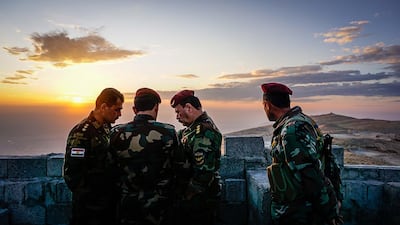
"The numbers we believe right now are 4,000 or 5,000 fighters in those gaps — armed. This is not including the sleeper cells they have in the cities, where the numbers are high," Lahur Talabany, director of the Zanyari, one of Iraqi Kurdistan's two intelligence agencies, told The National at an office attached to an upmarket hotel off of the main thoroughfare in the eastern city of Sulaymaniyah.
The fighters are equipped with Kalashnikovs, suicide vests, sniper rifles and Dushka heavy machineguns mounted on the back of trucks, helping them take over villages and carry out surprise attacks against the Iraqis and the Iraqi Kurds, officials say.
The spy chief's warning comes as fears rise about ISIS capitalising on ungoverned spaces to rebuild to the level of strength that allowed it to overrun Mosul and announce the creation of its proto-state in 2014. A Pentagon report released last month assessed that US President Donald Trump’s decision to withdraw US troops from northern Syria last month has already emboldened the group in the war-wracked country, not least because more than 100 ISIS fighters escaped from Syrian Kurdish prisons in the Turkish offensive that followed. At least 10,000 remain in prisons across north-eastern Syria, with many more in camps such as Al Hol.
“It was a good job that was done [defeating ISIS]. But unfortunately at the last minute they left it wide open and we see again this problem recurring and it’s going to be an issue for the region and the international community in the future,” Mr Talabany says. “It’s a new beginning for ISIS.”
In Iraq, the fighters are taking advantage in a sliver of ungoverned land between the Iraqi forces on the southern side and the Peshmerga on the northern side that varies in width between two kilometres at its slimmest and 50 kilometres at its widest, according to military officials. The administrative line that divides the two sides stretches from Sulaymaniyah and through the Iraqi provinces of Diyala, Salaheddin and Kirkuk, all the way to the Syrian border, allowing passage in and out of both countries.
The deadly battle between Baghdad and Erbil for the northern city of Kirkuk in October 2017 in the aftermath of the Kurds’ failed bid for independence has deeply affected trust. It has resulted in a lack of co-ordination and a failure to get joint operations off the ground. The Peshmerga retreated in the face of US-armed Iraqi forces, including Shiite militias whose presence exacerbated tensions. Their conduct in the five-day battle included reports that they rolled over the bodies of Peshmerga fighters in Abrams tanks supplied by the US to fight ISIS.
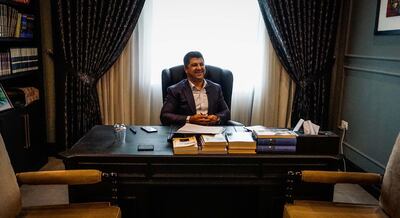
The above factors have allowed the disputed territory that separates them to become fertile ground not only for ISIS’s survival, but a sophisticated guerrilla insurgency. The Peshmerga, which has about 1,000 soldiers stationed on the Qara Chokh, do not operate past their frontline because of the steep incline of the mountain and the threat posed by the militants lying in wait.
“It is useless for me, I cannot lose my Peshmerga for nothing. You see the area,” says Col Barzanji, an edge of frustration in his voice. The force has lost more than 2,000 fighters and had more than 10,000 wounded in the battle against ISIS.
Their posts stretch 500 metres either side of the main outpost marked by a large red tower. The red-capped, camouflaged Peshmerga fighters mostly stand around, so elevated above the militants that they do not even have to man the guns pointing out towards the enemy. Untidy beds can be seen inside the main outpost building where the foot soldiers sleep, and desks scratched with graffiti sit inside pillboxes. Col Barzanji heads back down the mountain at night to another base a 10-minute drive away.
While the Peshmerga are dug in and ready, the terrain makes it hard to reach the enemy. But that means it is similarly difficult for the ISIS fighters to breach the Kurdish line of defence.
“If you have a stone in your hand, you can kill them,” Col Barzanji says of the Peshmerga’s 46th Brigade of the strategic vantage point the Peshmerga have over the militants. He estimates their numbers to be about 250 fighters in the mountain range’s eastern and western areas, but exact figures are difficult to confirm.
The US-led coalition assisting the Peshmerga told The National it estimates the number in the Qara Chokh to be closer to 100. Col Mark Andres, a US commander training and advising the Peshmerga, says they move in groups of five to 10 people, largely for defensive purposes, and may be "mistakenly double counted".
‘It’s a different warfare’
The flat plain below the fortified hilltop is left to the ISIS fighters, bar the weekly coalition or Iraqi air strikes called in by the Peshmerga or Iraqi security forces, both assisted by US adviser teams.
Col Barzanji points out two parallel streams in the distance. He says fighters have dug tunnels two kilometres long between them with jackhammers powered by generators.
“It’s easy [for them], there are too many caves in the mountain. They make tunnels in the side of the mountain. They make zigzags to save themselves for when the air force drops the bombs. They are smart, very smart,” he says.
“It’s too difficult to find them. They [are] hiding themselves. They are not coming outside, they just come outside for the water, they prefer the spring water.”
Water is the fighters’ life support. Villagers — either sympathetic to the group or coerced by fear — provide the fighters with water and food. The Iraqi military once poisoned the natural springs the militants were using, Col Barzanji says, but it was washed out within three days.
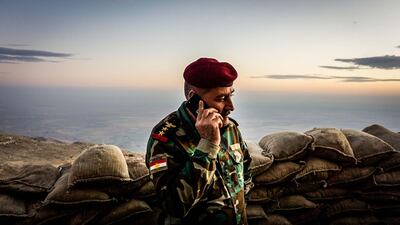
Some of the fighters sleep in the village houses they have wrested from locals, while others sleep in the caves. Any operation to oust them would require the work of elite Iraqi and Kurdish special forces, well trained at combating guerrilla warfare and discovering militant hideouts.
Even the Kurds, who are experienced mountain fighters, admit they face great difficulty with a new kind of combatant operating in this terrain. The fighters often move about under the cover of darkness. The Iraqi Kurds say they require night vision goggles and thermal imaging, as well as jammers to stop remote-controlled bombs.
“It’s a different warfare, they have different tactics, they upgrade their tactics all the time,” says Mr Talabany, the Kurdish spy chief. “They find new ways of being able to protect themselves and ways of preserving themselves.”
Col Andres says the fighters are using “pretty ingenious ways of sustaining themselves in the mountains”, where the sheer, 30-metre drop of the mountain has created “dead space” where the fighters can gather uninterrupted.
“Daesh fighters have really used every single nook and cranny to situate their locations well,” he says.
Photographs taken on Peshmerga missions to root out ISIS militants, seen by The National, show how ISIS fighters use the natural springs to cool watermelons and canned fizzy drinks. Kurdish forces have also found coffee, tea, sugar and batteries alongside Kalashnikovs.
“It’s like a picnic,” Col Barzanji says.
Images also show leafy brown tarpaulins used to cover and disguise cave entrances. He says his fighters have found solar panels used by their adversaries below for power.
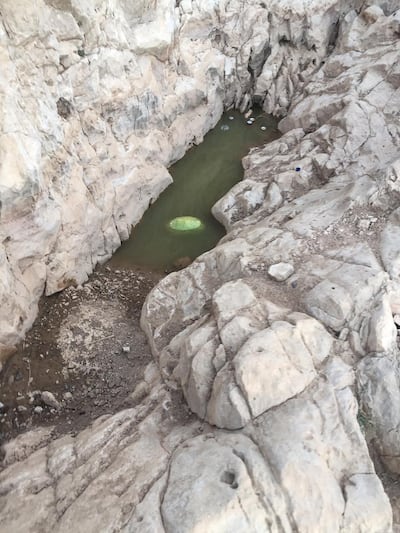
The biggest pocket of ISIS fighters in northern Iraq can be found in the Hamrin mountains where Mr Talabany says about 2,500 fighters hide with ease. It is a mountain range that connects five provinces, allowing the group easy access to different areas of the country.
A primary goal of the forces battling ISIS remnants in northern Iraq is to remove the sanctuaries they seek: mountain caverns, like those once used by Al Qaeda leader Osama bin Laden in the Tora Bora mountains of Afghanistan. So the coalition is focusing on striking their hideouts more so than the individuals themselves, Col Andres says.
“That’s in fact a more effective strategy right now, because they need a place to stay and need a place to store supplies.
“We are squeezing them.”
Beheadings and burnt crops
The fighters are trying their best to disguise themselves, with vehicles stolen from locals to confuse the forces either side of them. The militants have even extended the exhaust pipes on their motorbikes, according to the Peshmerga forces, to make them less noisy.
But the remnants of the group are also coming out of the shadows to boast about their presence, with gruesome attacks against villagers who do not side with them, as well as the burning of farmland and vegetation. “ISIS wants to show ‘we are here’, they burn all the weeds,” Gen Barham, a Peshmerga commander, said at an Erbil hotel.
Reports of beheadings in the gap are true, he says. “They did it like three times in one month. They went to the houses, they take them and take their heads off. They need to make themselves look strong. They don’t act like humans, they are all brainwashed.”
Last month, fighters entered a village, took 20 cows from a farmer and shot them all dead, he says.
Most of the militants in the Qara Chokh mountain range, the Hamrin mountain range and the area of Palkana south of Sulaymaniyah are Iraqi. But since the fall of ISIS’s last piece of territory earlier this year, the eastern Syrian hamlet of Baghouz, they have been joined by foreign fighters. The Peshmerga has monitored Russian-speaking Chechens, non-Iraqi Arabic speakers and Turkmen from Tel Afar.
These foreign fighters, unlike some who have appeared in the media, remain unrepentant. In an interview with The National at a prison facility near Sulaymaniyah, one captured ISIS foreign fighter says the group will rise again, and stronger, providing an insight into the hellbent mindset of the mountain militants.
“I can assure you, in just a few months, not years, it’s going to regain its power. It’s going to grow big. We all know what’s coming next. It’s a big war,” says Mohammed Khalid, 28, an Arab Israeli ISIS member.
“It’s gonna become something big, a lot bigger. This time is Damascus and Baghdad, not just Raqqa and Haleb [Aleppo].”
The main targets of this ragtag group of ISIS fighters are five-fold, according to Hisham Al Hashimi, an Iraqi researcher and security adviser to the Iraqi government on the militant group: assassinate specific targets including tribal leaders; attack security forces stationed near the Hamrin and Qara Chokh mountains; exhaust and deplete the economies of nearby cities; threaten energy towers and fuel networks; and obtain personal funds through extortion of villagers and farmers, and the sale of fuel.
A new leadership
Despite those threats posed by ISIS in these areas, the view in Baghdad is that the group is not yet strong enough to challenge for control of an Iraqi city, existing only in desert and mountain areas with a focus, for now, on reorganising.
“[The goal for the group] is to fill the gaps in its new structure. It’s currently distributing new roles, renewing allegiances, self financing and setting its priorities with the new leadership,” Mr Al Hashimi says. “It’s retaliatory operations are very limited, and will not cause any existential danger in big cities.”
The intelligence assessment in Baghdad, according to the Iraqi researcher, is that ISIS’s central command in Iraq is located south-west of Kirkuk in the Hamrin mountains and around the town of Hawija, the last major urban ISIS stronghold to be liberated in Iraq.
That new leadership is believed to be headed by Abdullah Qardash, a Turkman from Tel Afar, which ISIS controlled before its liberation in August 2017, Mr Talabany says.
The suited man who set up Iraqi Kurdistan’s first counterism-terror force with the help of the CIA to remove Iraqi Kurdistan of Ansar Al Islam, the Sunni militant group founded by former Al Qaeda members, says he remembers Qardash well.
The new ISIS leader became a senior member of Al Qaeda in Iraq after the American invasion in 2003 before he was caught and imprisoned. He would meet Al Baghdadi in Bucca prison, a facility Mr Talabany calls the “school of terrorism”, becoming one of the future ISIS leader’s right-hand men.
“The history we have with him, we know he was very brutal. He caused a lot of problems in Tal Afar and Mosul region. He had no mercy on the civilian population,” he says.
His targets were mainly civilian and his preferred tactic of order was suicide vest or vehicle bomb, some carried out in the middle of markets.
“I think this guy will go back to the old roots, he will try to put fear back into the people and the security forces,” he says, predicting that he will look to capitalise on the coming winter months to launch attacks.
“We will see them be more active operationally. They use the weather to their advantage. To hide from eyes."
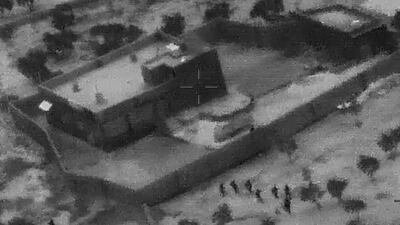
Qardash is believed to be in hiding in Iraq and the focus of the region’s intelligence services has now turned to him after the death of Al Baghdadi.
“He is going to be our main focus now. As long as ISIS is around, we will try to go after their leadership,” Mr Talabany says, noting the group’s brutality towards the Yazidis when it overran Sinjar in 2014.
Military officials compare ISIS’s capabilities now to where they were before it took control of Mosul, with the potential to grow in strength again to the point that they were able to overrun that very city.
“ISIS now, you can compare with 2012. They are organising themselves and their forces,” says Sirwan Barzani, nephew of former president Masoud Barzani and Peshmerga commander-cum-billionaire businessman, in the back room of a plush Erbil restaurant.
“They are a big threat. Maybe after they killed Baghdadi, like Al Qaeda maybe they will change the name, but it’s the same mentality, the same jihadis.”
Kurdish officials, while stressing their appreciation of western assistance in the fight against ISIS, say that European help has dwindled since the group’s territorial defeat, and say that support must be continued to prevent a revival.
“If you ask me as a general on the hottest front line, of course I would say it is not enough. We need more and more,” says Mr Barzani, the man responsible for protecting the Iraqi Kurdish capital.
'Fighting for all the world'
But until Erbil and Baghdad come to an agreement on the disputed territory, ISIS fighters will remain largely out of sight, free to reorganise and operate.
“We need to work closely and co-operate and to give no room for ISIS to re-emerge. Both sides recognise the need for this partnership to continue. Today it may be here, tomorrow it may be somewhere else,” Falah Mustafa Bakir, senior adviser to President Nechirvan Barzani and former Kurdistan Regional Government foreign minister, said at the newly built, palatial presidential complex in Erbil.
One obstacle to that is the militant Shiite militiamen operating on the other side of the gap within the Iraqi security forces, feared in northern Iraq's Sunni-majority heartlands for their brutality and sectarian disposition. The Hashd Al Shaabi paramilitary force is accused of emboldening locals to turn to ISIS, killing and torturing Sunni men, bullying Sunni women, fleecing money from Sunni-owned companies, and stealing goods — from mobile phones to furniture — to sell on.
“They come to places like this, they terrorise the people and the people get angry,” the general says.
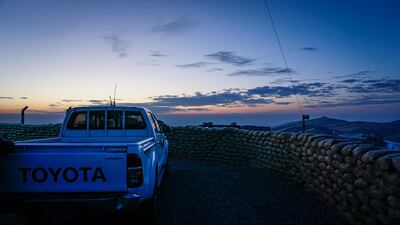
After the US-backed overthrow of Saddam Hussein in 2003 emboldened Shiite forces in Iraq, Al Qaeda sprang to life in the country and this northern area has more experience of terrorism than any. When ISIS arrived there, Al Qaeda remnants defected to the group.
The presence of the Hashd Al Shaabi here threatens to prolong the fight against the militants, as do troubles in Baghdad. Mr Talabany also says elements in the Iraqi security forces are aiding the ISIS fighters, without specifying.
“Somebody is helping, some people in the security elements are helping them, maybe for money, for financial gain. They are finding ways to get their hands on food, weapons and ammunition,” he says.
Anti-government protests, ongoing for almost two months, are also of concern to officials in Erbil, who believe that trouble at the heart of the country will leave the Iraqi security forces weakened in the north.
“If these demonstrations continue and spread through Iraq, I think there will be more opportunities for ISIS to strike security and small towns, maybe to cut off supply lines,” says Mr Talabany. “Everything is connected in this region, nothing is isolated.”
Such developments have only added to the feeling in Iraqi Kurdistan that they could be left to fend off the threat of ISIS again, alone.
As the sun sets behind the Qara Chokh, that thought shifts Col Barzanji’s tone from jovial to intense.
“We are fighting for all the world here.”
